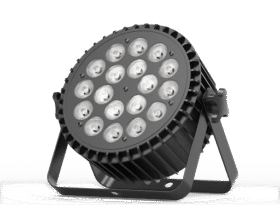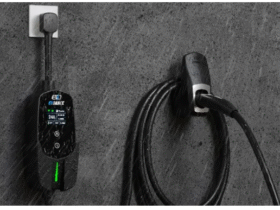The bakery industry is an ever-evolving sector that requires continuous innovation to meet consumer demands and maintain product freshness. One of the most critical aspects of delivering high-quality baked goods is ensuring they remain fresh from the moment they leave the oven until they reach the consumer’s table. This involves understanding the factors that affect the shelf life of baked goods and employing advanced packaging solutions to address these challenges. In this comprehensive exploration, we will delve into the various innovative packaging techniques that can maximize the shelf life of baked goods. We will also highlight the role of custom packaging, including the use of QR codes, in achieving this goal.
Factors Affecting Shelf Life of Baked Goods
To understand how packaging can enhance the shelf life of baked goods, it is essential to identify the primary factors that contribute to spoilage and staleness. These factors include:
- Moisture Loss: Baked goods can lose moisture over time, leading to dryness and staleness. Moisture retention is crucial for maintaining texture and flavor.
- Microbial Growth: The growth of bacteria, molds, and yeasts can lead to spoilage. Controlling microbial contamination is vital for extending shelf life.
- Oxidation: Exposure to oxygen can cause the oxidation of fats and oils in baked goods, resulting in rancidity and off-flavors.
- Light Exposure: Light can accelerate oxidation and cause discoloration, particularly in products with high fat content.
- Temperature Fluctuations: Inconsistent storage temperatures can adversely affect the quality and safety of baked goods.
Innovative Packaging Solutions
Innovative packaging solutions can significantly mitigate the impact of these factors, thereby extending the shelf life of baked goods. Some of the most effective packaging technologies include:
1. Modified Atmosphere Packaging (MAP)
Modified Atmosphere Packaging (MAP) involves altering the atmospheric composition inside the packaging to slow down the growth of spoilage organisms and oxidative reactions. This is typically achieved by reducing oxygen levels and increasing carbon dioxide levels within the package. MAP is particularly effective for extending the shelf life of perishable baked goods such as cakes, pastries, and bread.
2. Active Packaging
Active packaging technologies actively interact with the product and its environment to enhance shelf life. This can include:
- Oxygen Scavengers: These are materials that absorb oxygen within the package, preventing oxidation and microbial growth.
- Moisture Absorbers: These materials help control humidity levels within the package, preventing moisture loss or excess moisture buildup.
- Antimicrobial Agents: Incorporating antimicrobial agents into packaging materials can inhibit the growth of bacteria and molds.
3. Vacuum Packaging
Vacuum packaging involves removing air from the package before sealing it. This creates a low-oxygen environment that significantly slows down microbial growth and oxidation. Vacuum packaging is particularly useful for extending the shelf life of products such as muffins, brownies, and bread.
4. Edible Coatings
Edible coatings are thin layers of edible material applied to the surface of baked goods. These coatings can act as barriers to moisture, oxygen, and microbial contamination, thereby extending shelf life. Edible coatings are often used for products like pastries, donuts, and bread.
5. High-Barrier Films
High-barrier films are packaging materials designed to provide excellent resistance to moisture, oxygen, and light. These films can be used to create pouches, bags, and wraps that protect baked goods from environmental factors that can cause spoilage.
Custom Packaging
Custom packaging plays a pivotal role in enhancing the shelf life and overall appeal of baked goods. By tailoring packaging solutions to the specific needs of the product and brand, bakeries can ensure optimal protection, freshness, and consumer engagement. One innovative element that can be incorporated into custom packaging is the use of QR codes.
QR Codes in Custom Packaging
QR codes are two-dimensional barcodes that can be scanned using smartphones and other digital devices. These codes can store a variety of information, from website URLs to product details and promotional content. When integrated into custom packaging, QR codes offer several benefits:
- Enhanced Consumer Engagement: QR codes can direct consumers to a wealth of online content, such as recipes, baking tips, and brand stories. This not only enhances the consumer experience but also builds brand loyalty.
- Traceability and Transparency: By scanning a QR code, consumers can access detailed information about the product’s origin, ingredients, and manufacturing process. This transparency can increase consumer trust and satisfaction.
- Interactive Promotions: QR codes can be used to deliver exclusive offers, discounts, and loyalty programs. This can drive repeat purchases and increase customer retention.
- Product Authentication: For premium baked goods, QR codes can be used to verify the authenticity of the product, protecting against counterfeiting and ensuring brand integrity.
- Nutritional Information: QR codes can provide detailed nutritional information, helping consumers make informed choices about their purchases.
Implementing QR Codes in Custom Packaging
To effectively implement QR codes in custom packaging, consider the following steps:
- Design and Placement: Ensure that the QR code is prominently placed on the packaging and is easily scannable. The design should be visually appealing and in line with the brand’s aesthetic.
- Content Creation: Develop engaging and valuable content that consumers can access through the QR code. This could include videos, articles, recipes, and more.
- Testing and Quality Control: Before mass production, test the QR codes to ensure they function correctly and lead to the intended content. Regularly update the content to keep it relevant and engaging.
- Consumer Education: Educate consumers on how to use QR codes and the benefits they offer. This can be done through social media, in-store signage, and packaging inserts.
Case Studies
1. Artisan Bakery
An artisan bakery specializing in high-quality, preservative-free bread and pastries faced challenges in maintaining product freshness during distribution. By adopting high-barrier films and vacuum packaging, the bakery was able to extend the shelf life of their products by up to 50%. Additionally, the bakery integrated QR codes into their packaging, providing customers with access to baking tutorials and behind-the-scenes videos. This not only enhanced the customer experience but also drove engagement on social media platforms.
2. Gluten-Free Bakery
A gluten-free bakery needed a solution to prevent moisture loss and staleness in their products. They implemented edible coatings for their bread and pastries, which helped retain moisture and extend shelf life. To further enhance their packaging, the bakery used custom pouches with QR codes that linked to detailed ingredient information and certification details. This transparency reassured customers of the product’s quality and safety, leading to increased sales and customer loyalty.
3. Large-Scale Commercial Bakery
A large-scale commercial bakery supplying baked goods to supermarkets and retail chains required a packaging solution that could withstand varying storage conditions. They adopted Modified Atmosphere Packaging (MAP) to maintain the freshness of their products during transit and on store shelves. The bakery also used QR codes on their packaging to offer customers access to exclusive recipes and promotional discounts. This strategy not only extended the shelf life of their products but also boosted customer engagement and sales.
Conclusion
Maximizing the shelf life of baked goods is a multifaceted challenge that requires a combination of advanced packaging technologies and strategic innovations. By understanding the factors that contribute to spoilage and implementing solutions such as Modified Atmosphere Packaging, active packaging, vacuum packaging, edible coatings, and high-barrier films, bakeries can significantly enhance the freshness and quality of their products. Custom packaging, particularly with the integration of QR codes, offers additional benefits in terms of consumer engagement, transparency, and brand loyalty.
In an increasingly competitive market, investing in innovative packaging solutions is essential for bakeries to differentiate themselves, meet consumer expectations, and ensure their products remain fresh and delicious for as long as possible.











Leave a Reply